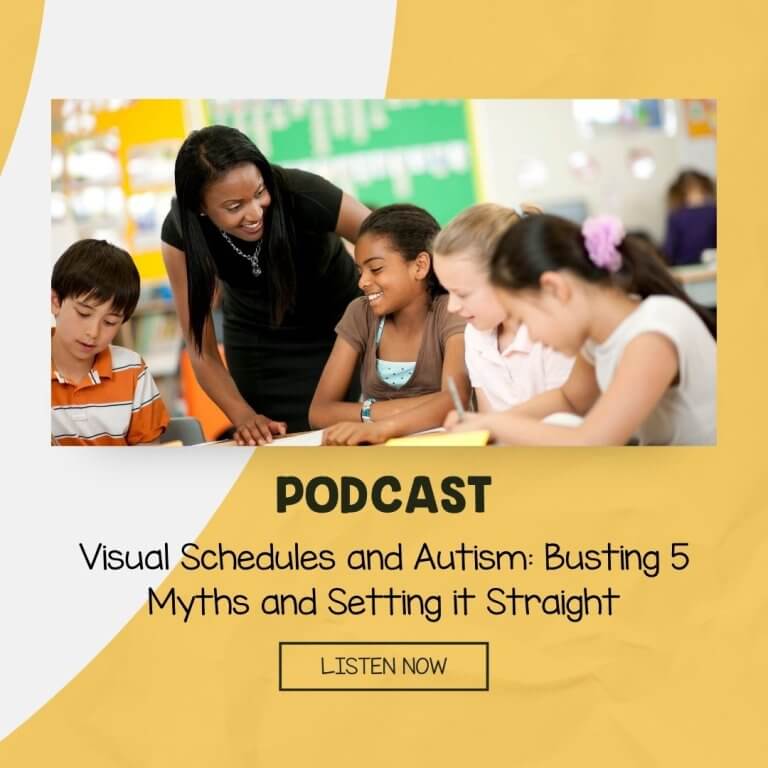In the many years I’ve been working in classrooms, the things the people tell me about visual schedules and autism never cease to amaze me. Just when I think I’ve heard (or seen) it all, something new comes along to surprise me. Some I might hear once or twice. But some myths I have heard repeatedly over the years. And that causes me to feel the need to set the record straight.
Let me start by saying I’m a little biased. I’ve seen what visual schedules and other visual supports can do for a individuals with autism when they are used correctly. And I also firmly believe that we all use visual supports. Some people just don’t recognize that it is what we are doing. I’ll talk a bit more about that later.
Who Needs to Hear About the Myths?
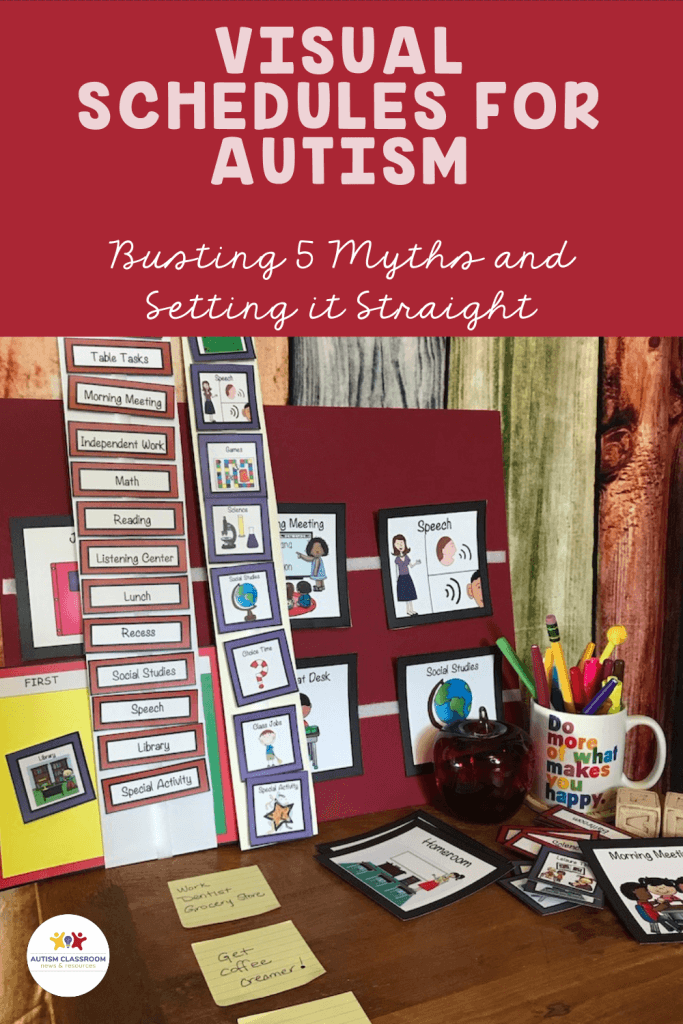
So, if you are a teacher who uses visual schedules in your classroom, awesome!! And you might be wondering whether this is relevant to you. But you might find that there are some implicit biases about the way we use schedules so that they aren’t always as effective as they could be.
If you don’t use visual schedules for students with autism, then this episode might give you some reasons why it’s worth trying. Many times I meet people who think that a student doesn’t need it for some of these reasons, so I’ll be tackling those.
Consultant or Support Staff?
And if you are a consultant, coach, support staff, mentor or any of those people who try to help others working with individual on the spectrum, then these myth busters might be helpful. It might help you understand what they believe that’s stopping them. Or they could help you figure out how to help them see how visual schedules could help their students with autism.
So, with all of that said, I’ve got a free set of visual cards for you below in the resource library. And there are tons of visual supports in my store to make it easy to implement visual schedules in the classroom.
Myth #1: “High Functioning” Students with Autism Don’t Need Visual Schedules
Well this one is just patently untrue. As I noted in episode 64, many times our students who are verbal and on grade level trick us into thinking they are able to do things they can’t do. We need to give them opportunities to be independent, most definitely. But if the difference between being independent is doing something with a visual schedule or doing something with an adult standing next to them….using the schedule is more independent.
If I take a grocery list to the store, am I less independent than someone who goes into the store without one? No. Then why would a student with a visual schedule be any less independent than a student without one?
It Doesn’t Have to Be a Picture Schedule
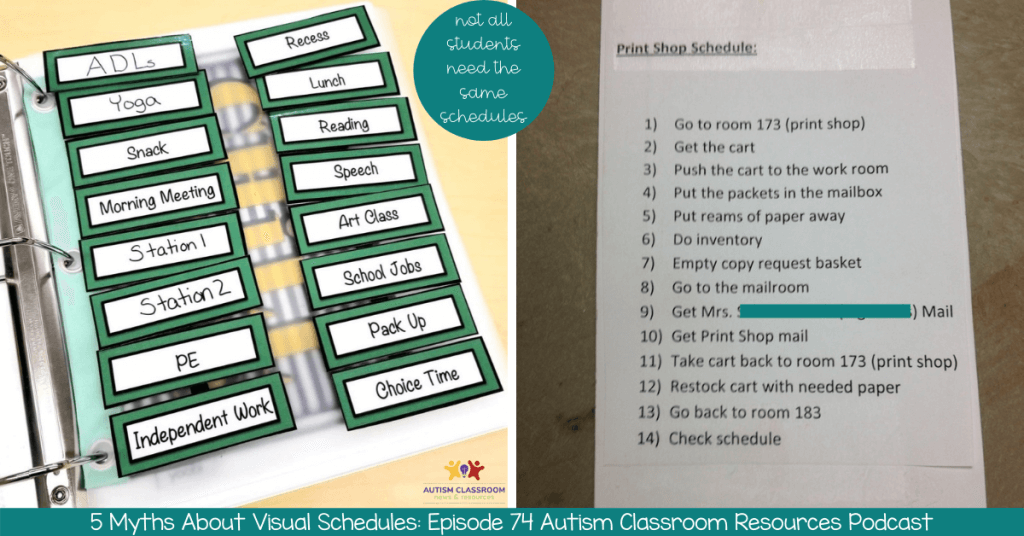
Keep in mind that not all visual schedules are picture schedules. These students may have a list or a written schedule, rather than a picture schedule. They can keep it in their pocket or their notebook. They may not need to even have a “schedule” but could use their daily planner as their schedule. But many times a visual schedule can help a student to navigate the day without adult support. So visual schedules for autism, in this case, can increase independence.
Myth #2 Visual Schedules for Autism Make Students Rigid
So many people I’ve met think that the students with autism got their rigid behavior from their schedule. Or they think that their visual schedule made it worse. In reality, rigid behavior is a characteristic of autism. Plus, if a schedule is used correctly, then it can be used to teach students with autism to be more flexible. And in fact, I have a blog post about how to do that.
Students become rigid with a schedule more frequently when they aren’t exposed to schedules that change. We all do. People become more averse to change when they don’t experience it. So the more routine our everyday life, the harder it is when something is different. If we use them right, visual schedules and autism can actually help teach flexibility, rather than increasing rigidity.
Myth #3 Students Become Dependent on Visual Schedules
Oh my, I hear this one so often. Well, to counter that one…I’m kind of dependent on my to-do list. I always tell training audiences this. If I took away all your planners right now, what would happen?
Would you miss some soccer games and dental appointments? Probably. Some meetings would definitely be missed right? Lots of stuff forgotten, right? But no one ever says we are dependent on our calendars or planners, do they? NO!
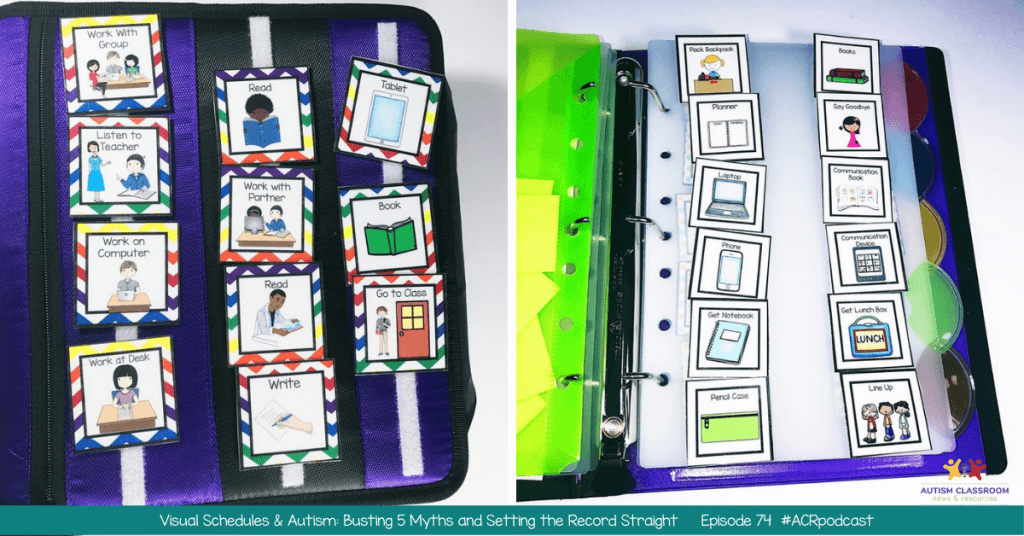
I would love for a student to not need a picture schedule for his whole life. But if that’s what he needs to be successful, I will stick with it.
We Can Always Change the Type of Schedule
However, when a student is successful for one type of schedule, we certainly can explore other types of schedules that might be less obtrusive. We might move to text schedules or lists when a student can read. Or move to portable schedules when a student is moving around more rather than always checking a schedule on the wall. There are lots of ways that we can mix it up over time and increase their skills. But if we are teaching them independence with their schedule, then they shouldn’t become any more dependent on it than I am on my grocery list.
Myth #4 Once a Student Knows the Classroom Schedule, He Doesn’t Need the Visual Schedule
Well this one just makes me nuts. And this is one I probably see the most. Many people seem to think that once the student has memorized the daily routine, the visual schedule isn’t needed. And since students with autism are often good at memorizing the daily routine. That happens pretty quickly.
But I don’t know about you…but often, my daily routine isn’t so routine! Students with autism need visual schedules because life is not routine. They need the schedule for the times that the routine doesn’t happen. And as I noted in #2, we need the schedule to teach them to be more flexible.
Just because a student doesn’t need his schedule to know the next activity doesn’t mean the schedule is longer needed. If I can remember some of the things on my grocery list, it doesn’t mean that I don’t need it for that last thing I got distracted from and forgot. (I don’t know why I’m perseverating on my grocery list, but the analogy works). Instead of deciding he doesn’t need his schedule, this would be a good time to start teaching him to be more flexible.
Myth #5 Visual Schedules and Autism are Always Just Daily Picture Schedules
Nope. Just Nope!
There are so many amazing and creative ways to create visual schedules. Yes, for many students we might start with picture schedules. But we might start some students with object or tactile schedules.
Others may start right away with written lists or planners. If you aren’t sure what type of schedule you need, I have a blog post that breaks it down for you to help you decide.
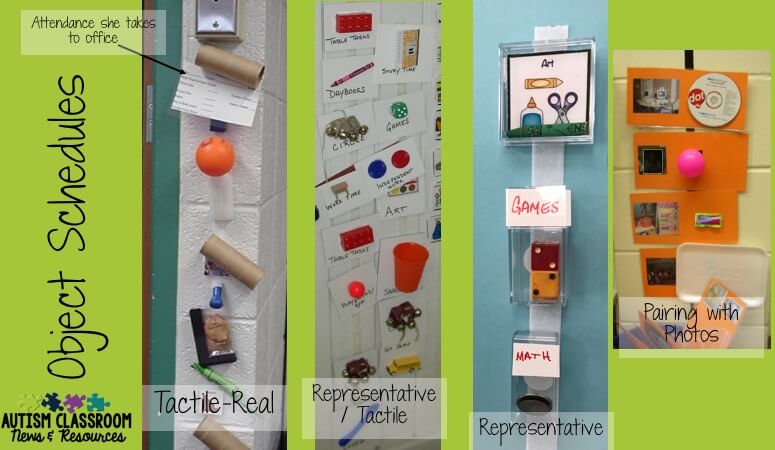
But in addition to different types of visuals, there are also different types of schedules. Some students need a full-day individualized schedule. Others need just a schedule presented part of the day at a time. Another student might need just the class schedule or group schedule at the front of the room and a portable schedule for when they rotate through centers.
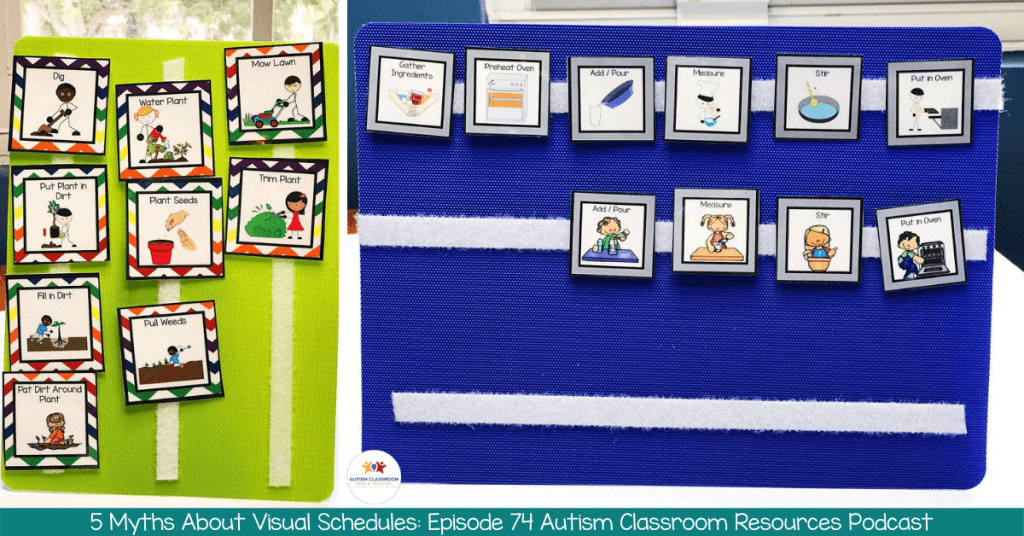
And some students may need mini-schedules or task analysis schedules that break down specific activities into smaller components. So in addition to a schedule for each activity, he might need a schedule for the activities of arrival. That would be a schedule that tells him get your lunch box out of your book bag, take out your home folder, put it in the inbox, put your lunchbox away, put your book bag away, hang up your coat, etc.
It’s more detailed and more pictures (likely it’s pictures at that level of detail). But it allows him to be more independent with no one telling him those steps.
Need More Visual Schedules and Autism Resources?
I feel like I can never get enough visuals. So I’ve got tons of visuals in my stores from visuals for redirecting to full schedules for the classroom including group schedules, check-in visuals and individual picture and text schedules. And you’ll find links to all of them below. And I’ve got a free set of leisure schedules in the Free Resource Library you can there too.
I’ve also included some resources for different types of schedules as well in the resources section below. And of course I’d love to hear about what myths you have run into when working with visual schedules and autism so if you are an educator, hop over to our free Facebook group at specialeducatorsconnection.com and share!

